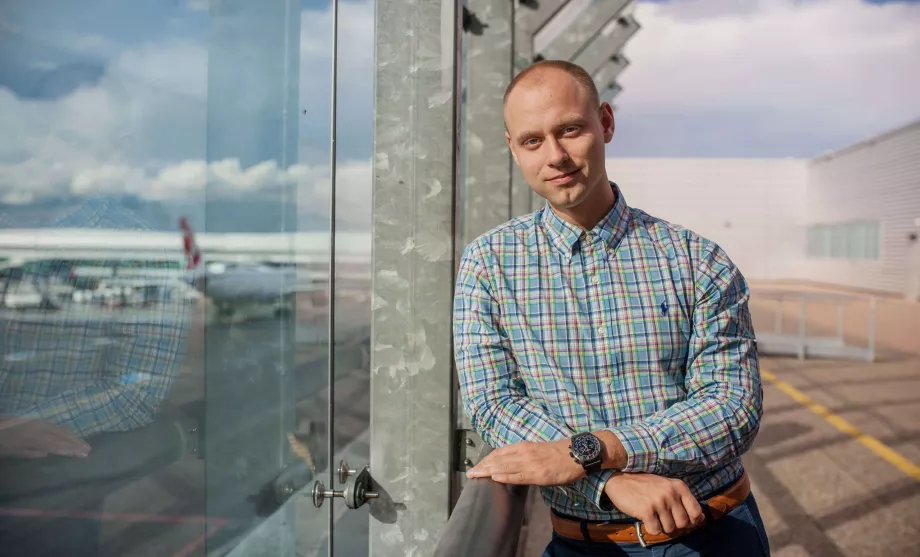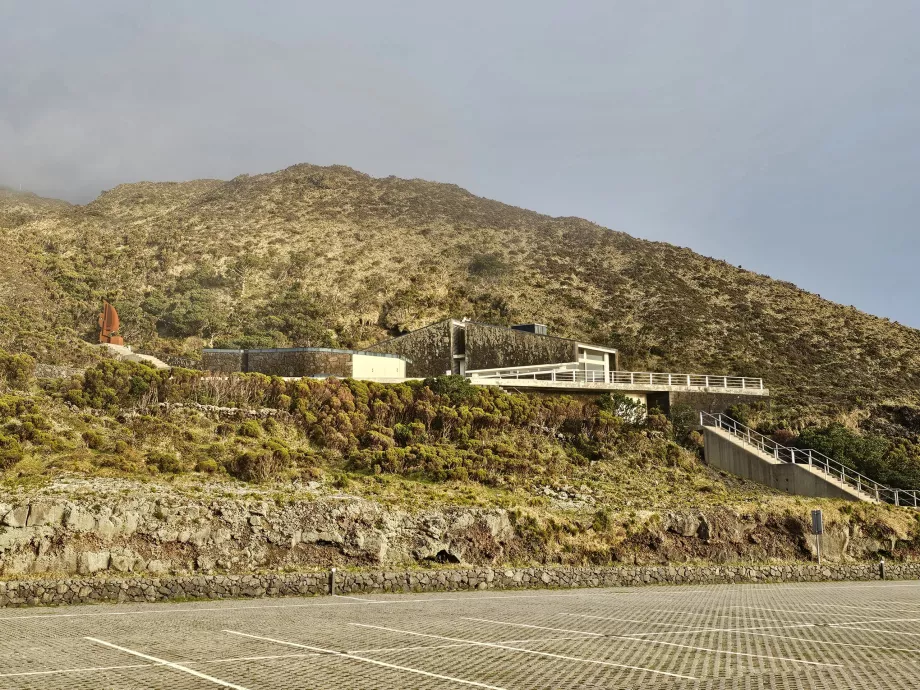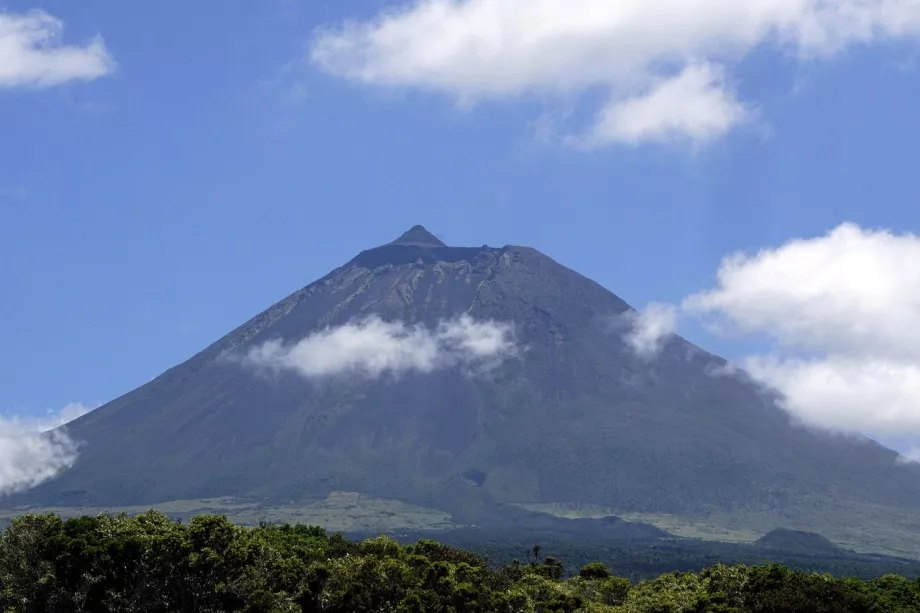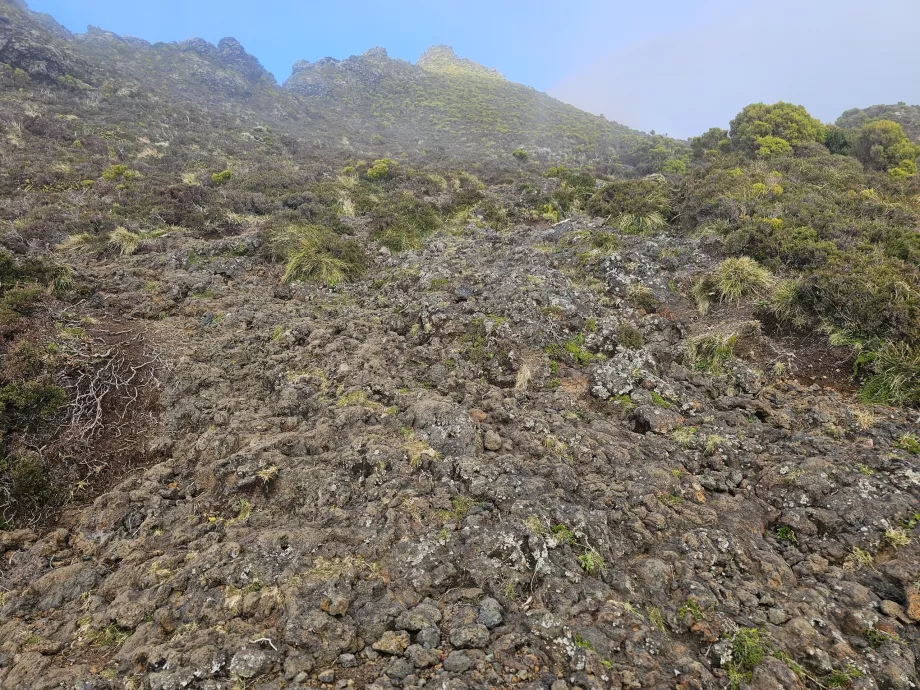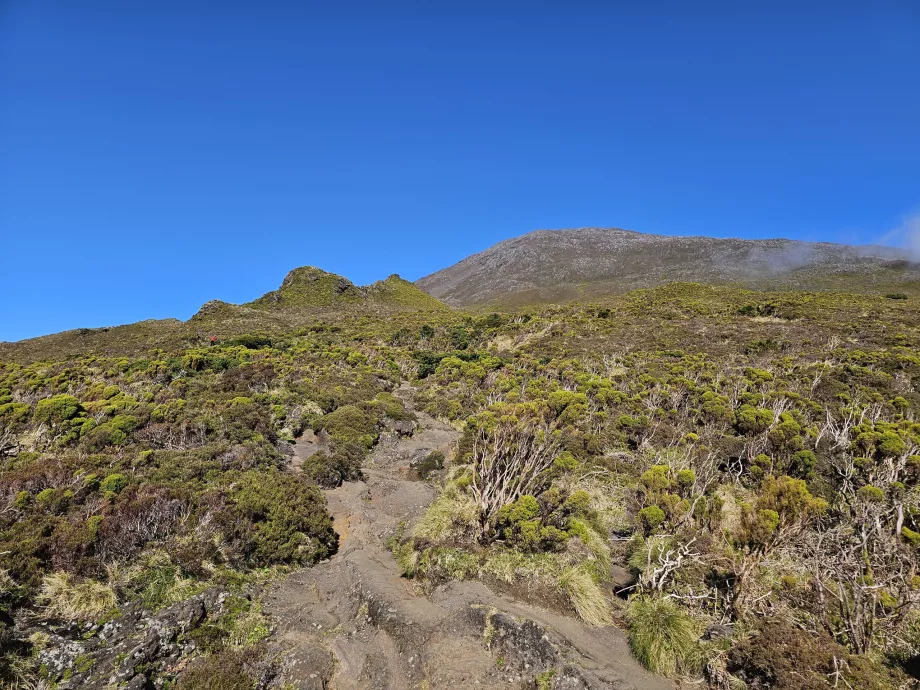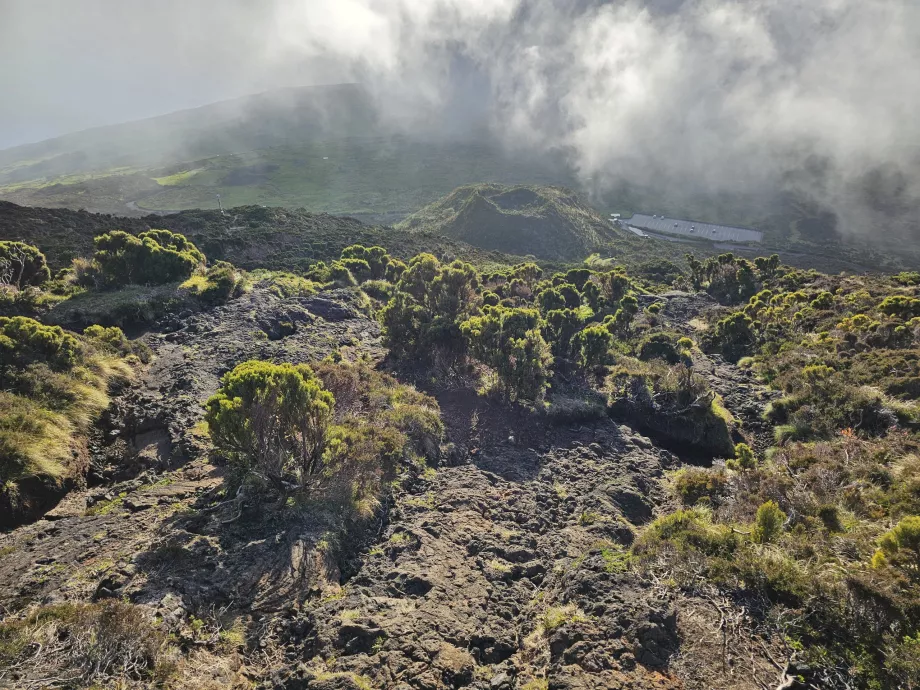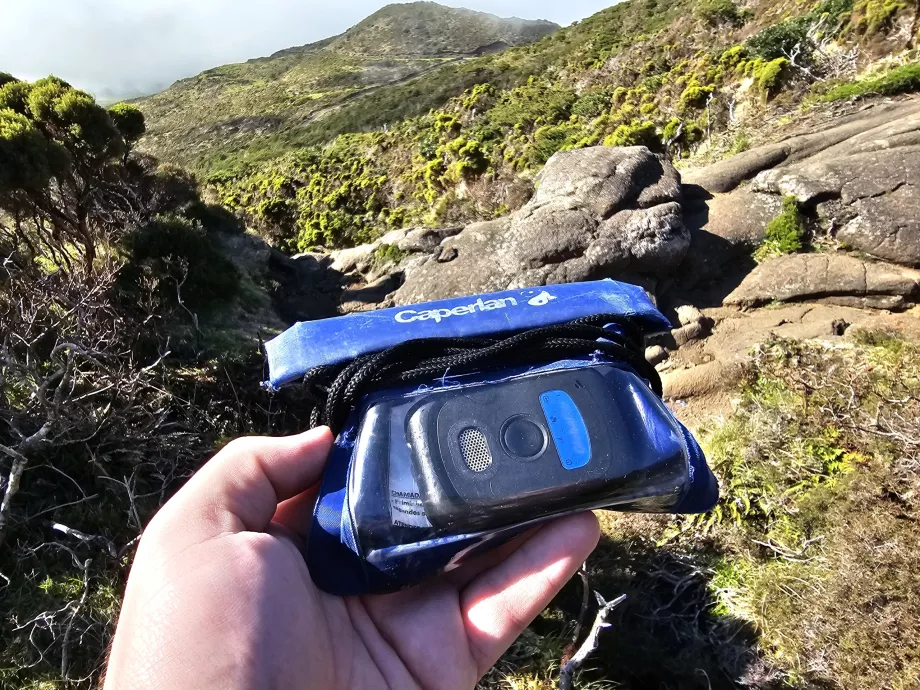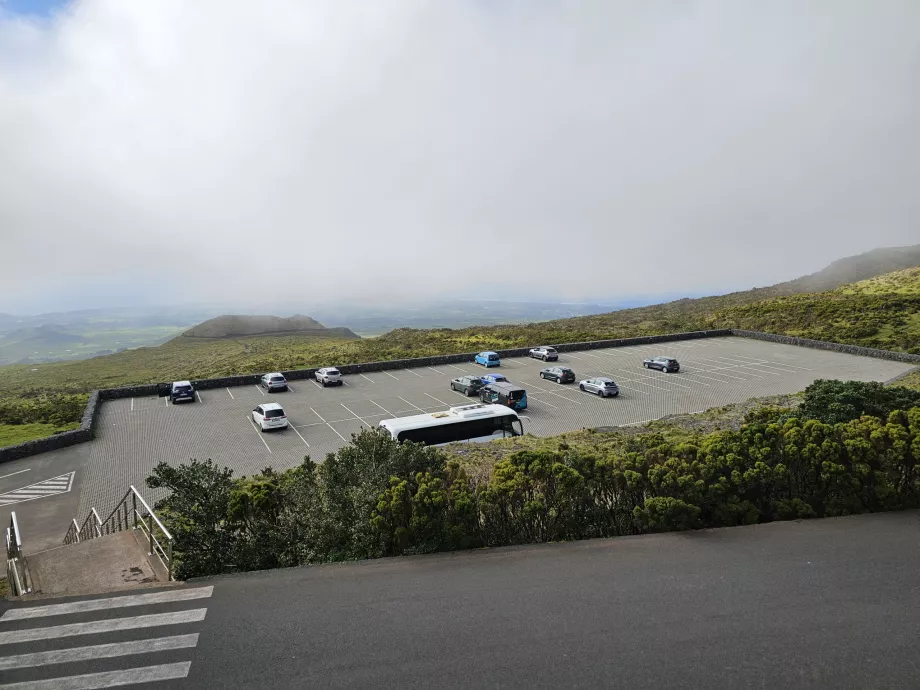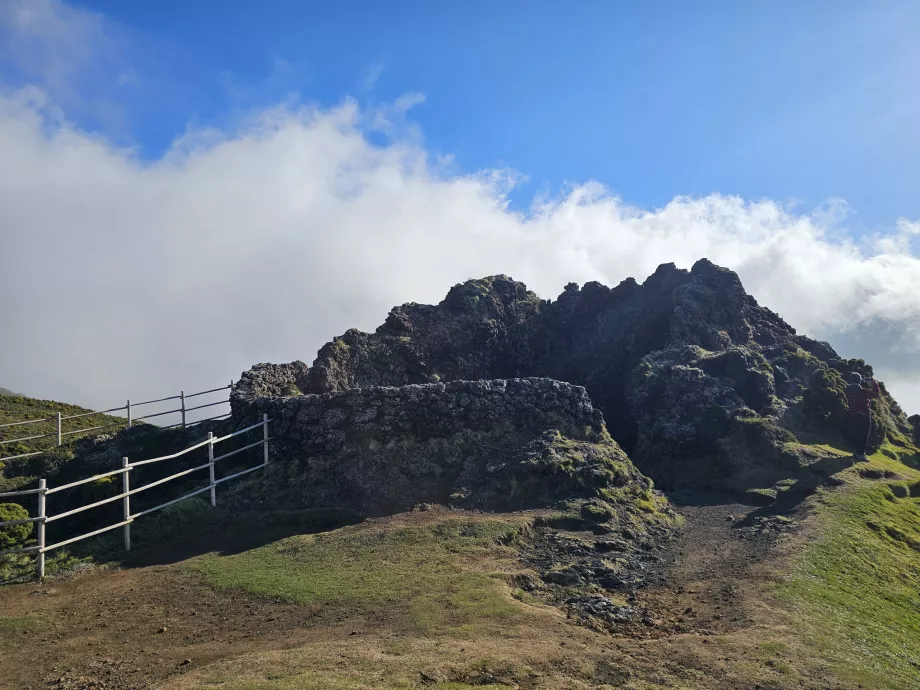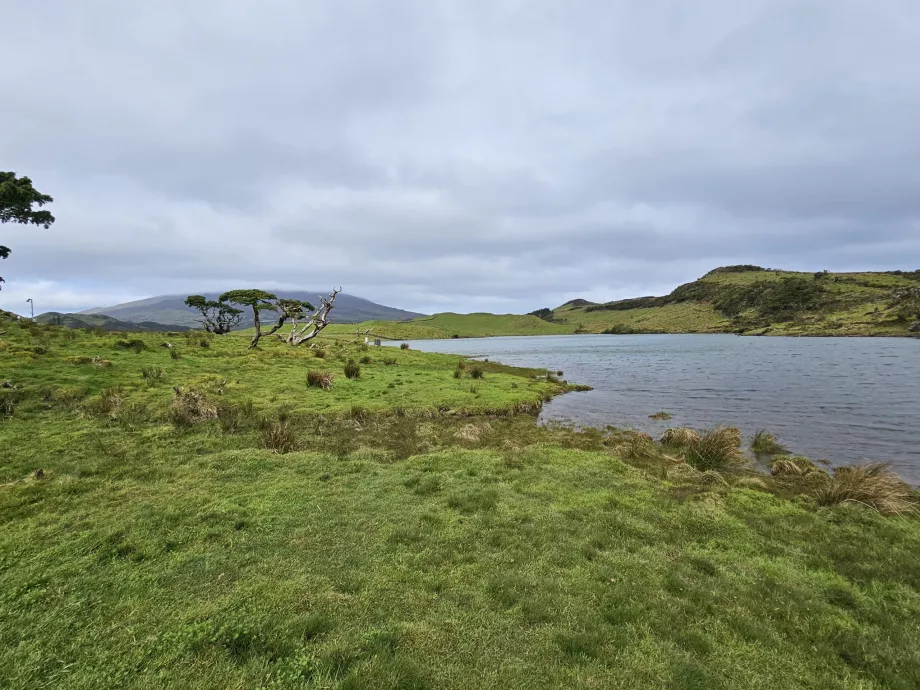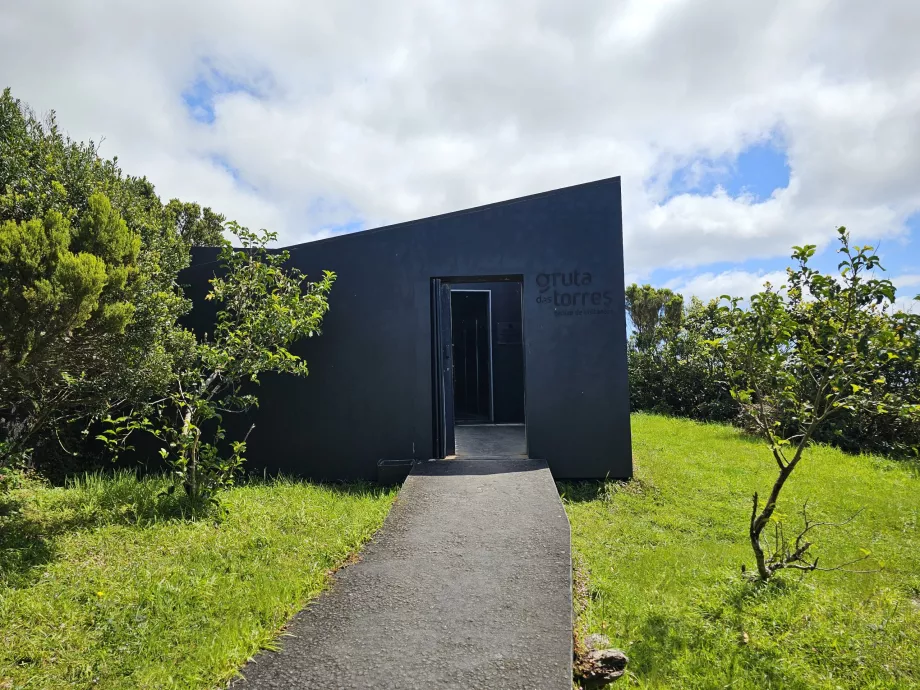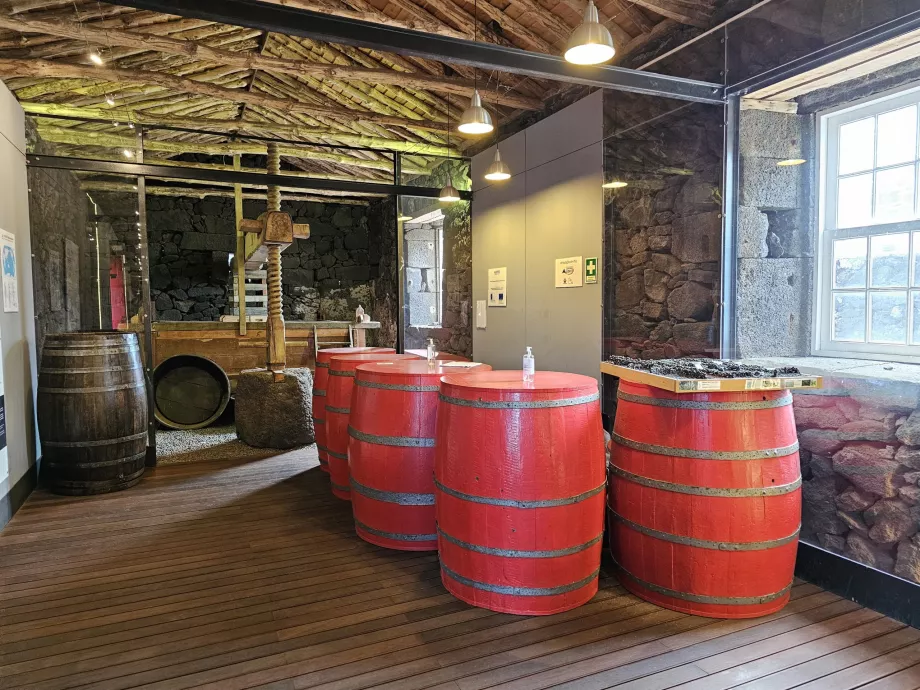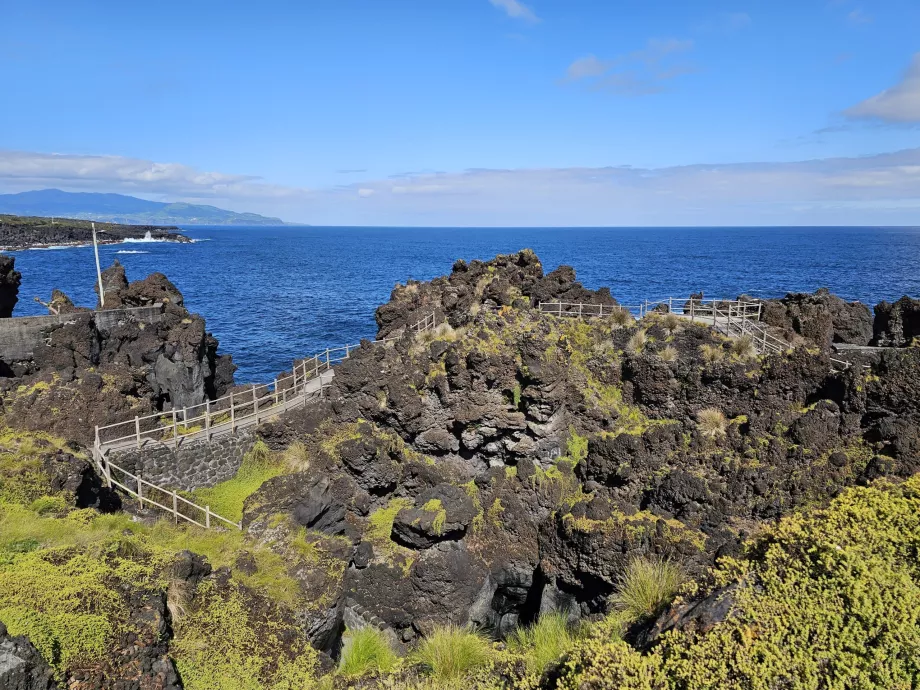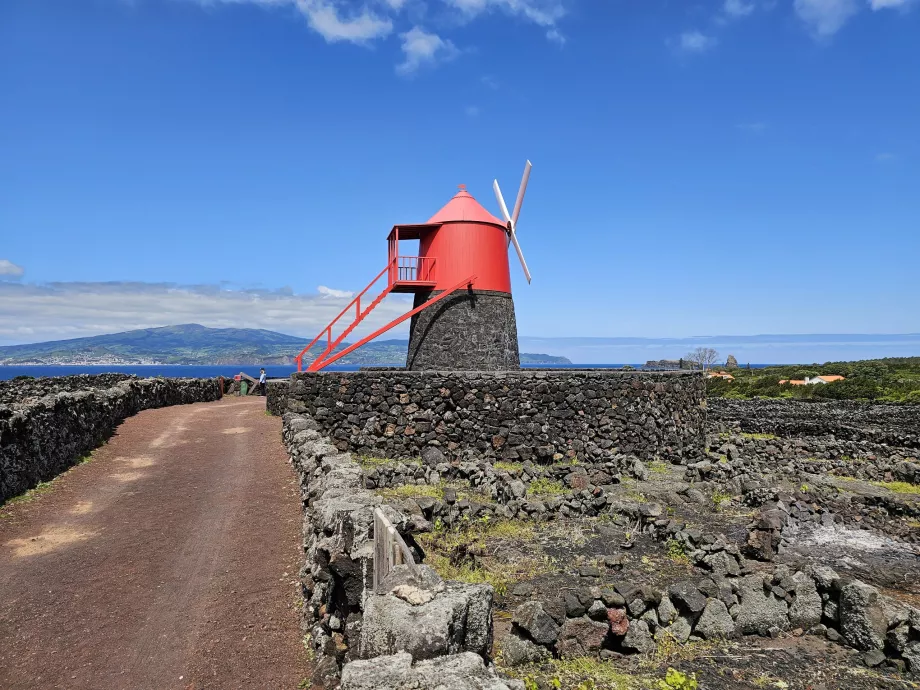Mount Pico

The same name as the whole island is also the biggest tourist attraction - Pico Mountain. In fact, of course, the mountain gave its name to the whole island, as it is the absolute dominant feature of the surrounding area.
At 2,351 metres, Mount Pico is not only the highest point in the Azores, but also in the whole of Portugal.
Reservation and entrance fee
It is not possible to climb Mount Pico without a reserved entrance. You can try to go to Casa da Montanha blind and hope that there are still places available, but especially in summer the chances are pretty slim and you probably won't make it to the top.
Entry can only be booked through the official website of the Natural Park Authority: montanhapico.azores.gov.pt.
You can choose from two different fee options.
- 25 eur - Climb to the very top (Piquinho)
- 15 eur - climb up to the Pico Crater to a height of about 2,230 metres
- 35 eur - climb to the top (Piquinho) + overnight in your own tent on the mountain
- 5 eur - ascent to Furna Abrigo only, approx. 45 minutes one way - no advance booking required
In the summer season (May-September) we recommend booking at least a week in advance to ensure you can climb at your preferred time.
Can I cancel or change my reservation?
Reservations are usually made several days in advance, when there is absolutely no chance to predict the actual weather on the mountain for that day.
You can change your reservation 2 hours before the originally scheduled time of the climb. However, you cannot cancel the reservation. Your money will only be refunded in full if the authorities prohibit climbing the mountain due to weather.
Climbing Mount Pico
Being the highest mountain in Portugal and the main attraction of the island, Pico attracts the attention of many tourists. The possibility to climb to the top without any mountaineering knowledge attracts even travelers who are not so experienced in mountain hiking.
Here we describe our experience of Mount Pico and the practical information you need to know before you even decide to climb Portugal's highest mountain.
To begin with, some of the most basic information.
- 2 ,351 metres - altitude of the summit
- 1 ,200 metres - the altitude of Casa da Montanha, the hut from where the only path to the summit leads
- 7-8 hours - average ascent and descent time (about 3.5 hours up, 4 hours down)
- from 15 EUR - price per climb
10 best accommodations on Pico
Crater or Piquinho?
Even when viewed from a distance, you can see that there is another more pointed peak jutting out from the summit itself - the highest point of the mountain. It's called "Piquinho" and there can be a maximum of 20 people on it at any one time.
The hike from the crater to the top of Piquniho itself at 2,351 metres is very short, but even steeper than the previous 3-hour climb from Casa da Montanha.
So consider your strength well and allow for an extra 45 minutes or so of walking there and back all together.
When is the mountain accessible?
Mount Pico is open to hikers all year round, except on January 1 and December 25, when climbing is not legally possible.
During the winter, it is not possible to spend the night on the peak, nor can night climbs be made to watch the sunrise. In summer, the mountain is open 24/7.
The opening hours of Casa da Montahna are as follows:
- 1 May to 30 September - ascent is possible 24/7.
- April and October - access to the mountain is possible from 8:00 a.m. to 8:00 p.m., from Friday 8:00 a.m. to Sunday 8:00 p.m. Open 24 hours a day and overnight
- November 1 to March 31 - access to the mountain is possible from 8:00 a.m. to 4:00 p.m.
How difficult is the climb up Pico?
Personally, we consider Pico to be one of the most difficult mountains commonly accessible without climbing equipment. Roughly one third of all hikers eventually fail to reach the summit and must turn back.
The distance is not that long - from Casa da Montahna to the summit and back is 7.2 km - but the elevation gain is drastic. For every 3 metres of distance, there is 1 metre of elevation gain.
The trail follows old lava rock, but alternates between many different surfaces. The most treacherous are the small round stones that roll away under your feet, or the very comfortable lava tongues in dry conditions, which turn into a slide when wet.
The way up
The climb is challenging. The first 30 minutes or so to Abrigo Cave is steep but on a fairly safe and comfortable path, but from about marker number 6 the path turns into a constant steep climb.
Several paths are often trodden between each marker, but all are similarly challenging and relatively safe for the way up. After all, it's easier to brace your hands on the ascent in case you slip.
In general, a person with good physical condition, used to hiking, can make the ascent without much trouble.
The way down
The descent from the summit is paradoxically more difficult than the ascent. Although you don't face any climbing sections, you have to take really big steps sometimes and choose the place you step on very carefully.
The way down therefore takes a bit longer than the ascent and can be described as a never-ending choice of the right stepping point.
Total time and length of ascent and descent
Experienced travellers with good fitness can reach the summit in 2.5 to 3 hours. The return journey takes 3 to 3.5 hours.
Ordinary travellers should allow at least 2.5 hours extra and allow a total of 8 hours (ascent and descent combined).
The total length of the route is 3.6 km in one direction and the elevation gain is 1,150 metres in one direction.
How is the route marked?
Between Casa da Montahna and the summit, there are 47 numbered posts along the way, marked with the typical red and yellow sign.
The greatest distance between the 1st and 2nd pillar (about 25 minutes walking) is along a very visible beaten path.
The other posts are about 4-10 minutes' walk apart. The signage is reflective and very well maintained and therefore visible even at night by torchlight if you are climbing to the top for sunrise.
There are often several variations of trodden paths between the posts. Keep to these paths only - walking off the beaten track is forbidden.
When to go to Mount Pico?
During the summer from May to September, night ascents are possible, including overnighting at the summit along the crater in your own tent.
If you want to experience the sunrise, it is also possible to go to the top without overnighting around 2:00 am depending on the season.
If you want to experience the sunset, it is recommended to spend the night on the summit. Going up in the dark is different from going down, where walking in the dark is significantly more dangerous.
Most travelers head to the summit in the morning to allow plenty of time. Count on the fact that during the morning, the entire side of the mountain where the trail leads is in shadow and therefore cold.
Weather on Mount Pico - what to prepare for
Be prepared for very quick and especially unexpected weather changes. Even though it may be completely clear everywhere before reaching the summit, it may end up raining or foggy for the whole time you are on the mountain.
Conversely, if conditions seem extremely unfavourable, you may end up with glorious sunny weather on the summit.
As there is no vegetation along the ascent route, you can often expect strong winds with nowhere to hide from them.
In summer, on the other hand, if the weather is clear, you should use a good quality sunscreen.
The temperature at the summit is normally between -5 °C and +7 °C, so warm clothing is essential.
Is it snowing on Pico?
Between December and February, snow and ice can occur on the summit. In this case, entry is only allowed if hikers have their own crampons or snowshoes.
Recommended/mandatory equipment
At Casa da Montanha, you must fill out a paper with your personal details at the reception desk and the nature reserve staff will make sure you have the following compulsory equipment:
- Hiking boots.
- Enough water (ideally at least 3 litres per person).
- Hiking clothing - especially a wind/rain jacket
You will also be given a compulsory GPS Tracker, which you will hand in again at Casa da Montanha on your return.
Good quality sunscreen, sunglasses and gloves are also recommended.
Only take hiking poles if you have experience with them. For many less experienced hikers, they can be more of a hindrance in difficult terrain, especially when descending.
Climbing with a guide
There are several agencies on the island that can arrange guided ascents of Mount Pico, as well as transport from the town (typically Madalena or Lajes) to the trailhead and then back.
Prices are around 60 eur.
Examples of registered agencies:
How to get to Casa da Montanha
There is a tarmac road leading to the trailhead, but no regular public transport.
If you want to climb to the top individually, you will need to take a rental car to Casa da Montanha.
There is a large free car park below the mountain hut, where you will always find plenty of free spaces.
Compare prices and book a car at the airport
What to see around
Discover all the places to see in Pico.
Any questions left?
If you have any questions or comments about the article...
